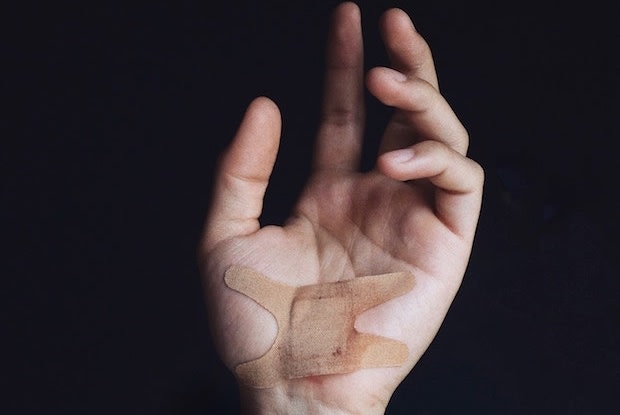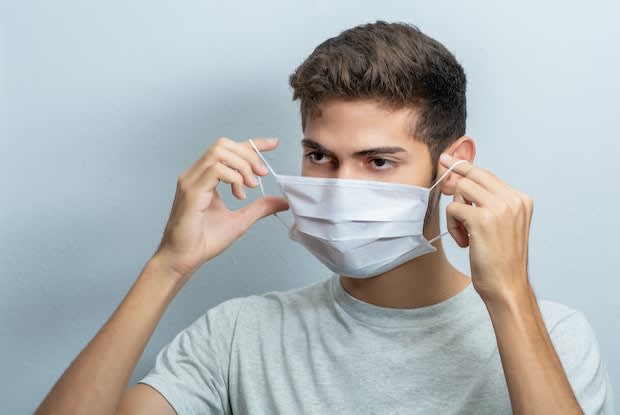Table of Contents
II. What are Bacterial Infections?
III. Bacterial Skin Infection Symptoms
IV. Understanding Sexually Transmitted Infections (STIs)
V. Bacterial Chest Infection Symptoms
VI. Medications for Bacterial Infections
Bacteria 101
Bacteria are microscopic organisms that are present all around us. They thrive in diverse environments, including the ocean, soil, and the human gastrointestinal system. Our relationship to bacteria is complicated. For the most part, we live symbiotically with bacteria, but bacteria can cause serious symptoms and side effects in other cases.
It may make your skin crawl, but there are ten times more bacterial cells than human cells in the body. The majority of the time, these cells are friendly and helpful with the body’s processes, like digestion. But if the body comes into contact with harmful bacteria, it may enter the system and cause several dangerous conditions. A bacterial infection may occur, and you may need to use antibiotics like amoxicillin. Read on to learn more about the types of bacterial infections and the symptoms that may occur. [1]
What are Bacterial Infections?
The body can experience several different types of infections. Because there are so many bacteria around us, they are often more common than viral or fungal infections. Bacterial infection occurs when a harmful strain of microorganisms begins to grow within the body.
These infections can be transmitted in several ways, and they are most often passed from person to person. You may also develop a bacterial infection through contaminated food, water, or other living vectors. Generally, these infections are prevented through clean water, safe sex practices, personal hygiene measures, and the immunization of humans and animals. [2]
Viral infections differ because they are smaller than bacteria and need a living host to survive. When a virus enters the body, it invades the cells and produces more of the virus. Doctors may have a hard time determining whether or not you are experiencing a viral or bacterial infection. Antibiotics like Keflex (cephalexin), Levaquin (levofloxacin), or retapamulin cream will only work for bacterial infections, not viral infections. [3] Fungal infections are also a common occurrence. Infections can occur when the fungus invades the body and becomes too much for the immune system to fight. You may come across harmful fungi through the air, soil, water, or plants. There are also helpful and harmful fungi, but you may want to speak with your doctor if you notice unusual side effects. [4] Everyone will likely experience some form of bacterial skin infection in their lifetime, so it is important to be aware of their symptoms. These infections can take on several forms, and the severity depends on their location and how long the infection has been present. The skin is the largest organ of the body, so it is prone to many cuts and scrapes. If bacteria enter broken skin, an infection can take hold. Some infections happen at the skin’s surface, while others can start deeper in the wound. Minor infections can be treated at home, but more serious infections may require retapamulin cream or Keflex (cephalexin). You may have a skin infection if you experience the following: The human reproductive system is prone to several different types of infections. These infections are acquired by sexual conduct, and bacteria can pass from blood, semen, or other bodily fluids. They may also be passed non-sexually from mother to child through pregnancy or childbirth. The most common sexually transmitted bacterial infections include gonorrhea, syphilis, and chlamydia. It is important to make sure that your sexual partner has been tested for sexually transmitted infections so you can avoid getting them yourself. Bacteria may also cause urinary tract infections, which occur more commonly in women after sex. Keflex can significantly improve UTI symptoms. Other symptoms of STIs include: A respiratory infection affects the lower respiratory tract, which includes the windpipe, bronchi, and lungs. Bronchitis and pneumonia are the two most common types of respiratory infections. These infections can be mild and treated easily, but they can become life-threatening if they are not treated quickly. Bacteria or viruses are the usual culprits behind respiratory infections. You can transmit infection by inhaling respiratory droplets from someone who is experiencing an infection. The elderly and those who smoke or have chronic health conditions are at a higher risk of respiratory infections. Having a weakened immune system also puts you at risk. Symptoms of these infections include: As mentioned earlier, antibiotics are the most common form of treatment for bacterial infections. Amoxicillin is one of the most common antibiotics that can treat a wide variety of bacterial infections. This is a penicillin-type medication that stops the growth of bacteria. It is essential to take the full prescription of your antibiotic treatment to ensure that the bacteria do not return. [8] Other common antibiotics include Keflex (cephalexin), Levaquin (levofloxacin), and retapamulin cream. These drugs work similarly to amoxicillin and prevent bacteria from growing out of control. If an antibiotic does not stop bacterial growth, bacteria may spread to other parts of the body and cause several complications. If you believe that you are experiencing a bacterial infection, you should talk to your doctor to ensure you receive proper treatment. [9] The content in this article is intended for informational purposes only. This website does not provide medical advice. In all circumstances, you should always seek the advice of your physician and/or other qualified health professionals(s) for drug, medical condition, or treatment advice. The content provided on this website is not a substitute for professional medical advice, diagnosis, or treatment.
Bacterial Skin Infection Symptoms

Understanding Sexually Transmitted Infections (STIs)
Bacterial Chest Infection Symptoms

Medications for Bacterial Infections
